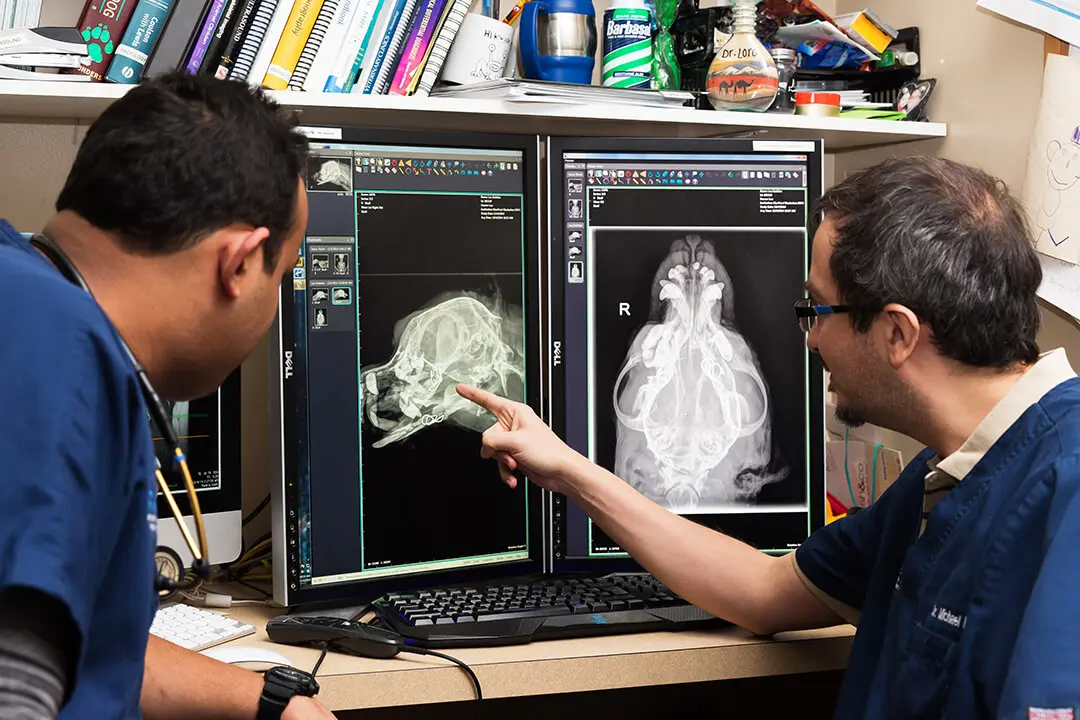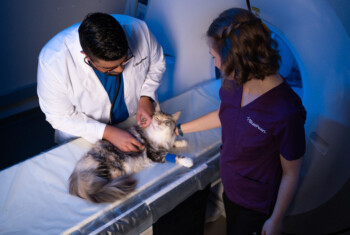Jaw Fractures: Using Wire and Acrylic Splinting
Each jaw fracture is different, and consequently, each fracture may require a different treatment. However, prior to addressing a broken jaw, we must ensure your pet is otherwise stable.
Sometimes we take X-rays of the chest or abdomen to look for bruising in the lungs or hidden bleeding. Depending on  the cause of the fracture (being hit by a car or misjudging a stair height), it is not uncommon to provide supportive care (fluids, pain medications, etc.) for 12-48 hours prior to surgery. This allows your pet to start to recover from the trauma.
the cause of the fracture (being hit by a car or misjudging a stair height), it is not uncommon to provide supportive care (fluids, pain medications, etc.) for 12-48 hours prior to surgery. This allows your pet to start to recover from the trauma.
Jaw Stabilization and Repair
Jaw fracture stabilization and repair is often performed with wire and acrylic splinting. These splints are minimally invasive, meaning we often do not have to make incisions or place pins to put the pieces back together. Often you cannot even see the appliance from the outside.
Although your pet will need softened food and no access to chew toys, he or she can often continue to go for walks and partake in many of their usual activities while the splint is in place.
Most pets can eat the night of surgery. There will be some maintenance required to care for the splint (flushing, checking for cracks, etc). Typically, after 6-12 weeks, X-rays will show a healed jaw bone, and the splint can be removed.
Occasionally, we have to use alternative methods to image or repair a complicated jaw fracture, but we will work together to find the right solution for your pet.


